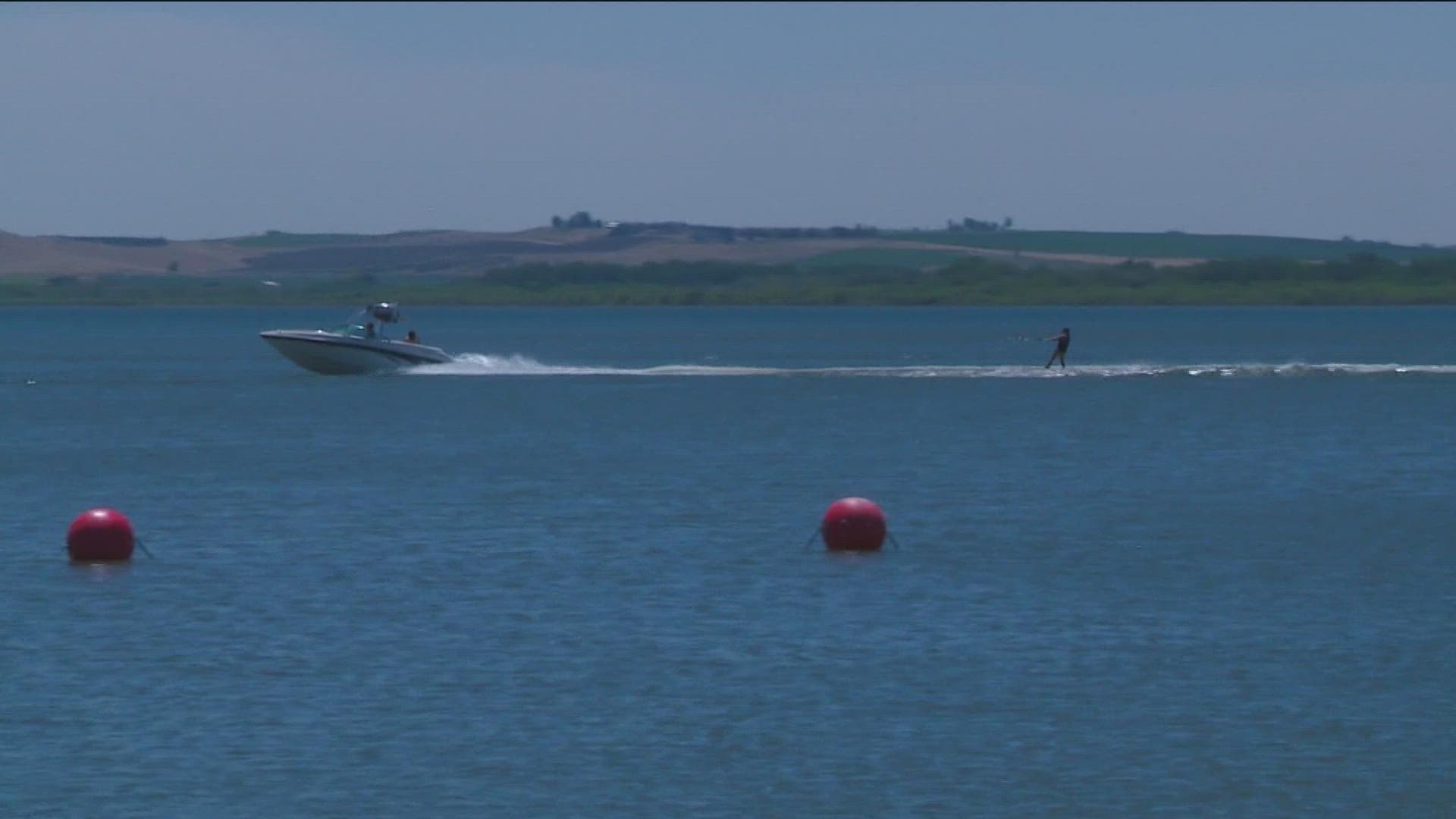BOISE, Idaho — Southwest District Health (SWDH) has issued a health advisory for Lake Lowell, citing high concentrations of cyanobacteria in the water.
Cyanobacteria produce toxins in the water that are harmful to people, pets and livestock. Those with liver or kidney damage may face an increased risk of illness, and should take extra precautions when recreating in or near the body of water.
The following precautions should be followed while the advisory is in effect at Lake Lowell:
- Avoid swimming, wading, or participating in other activities in or near the water. Take extra precautions to ensure children, pets, and livestock are not exposed to the water. Do not drink or cook with water containing a bloom. Boiling and filtering the water does not remove the toxins and can increase the risk of adverse health effects.
- Wash hands thoroughly in clean water after handling fish caught in water experiencing a bloom. Cyanotoxins can accumulate in fish, but the risk to people is still being researched. Clean and wash fish thoroughly in uncontaminated water and dispose of internal organs before consumption. If you choose to eat fish from this area, filet the fish and remove all fat, skin, and organs before cooking.
- Clean skin or pet fur with clean water as soon as possible after any water contact. No updates will be provided until testing from Idaho's Department of Environmental Quality reveals toxins are below the health standard. The public will be advised when the concern no longer exists.
Cyanotoxin exposure symptoms may include rashes, hives, diarrhea, vomiting, coughing, and/or wheezing. More severe cases may see symptoms that negatively impact the liver and nervous system, resulting from contaminated water being ingested.
Individuals experiencing persistent symptoms should contact their healthcare provider.
Wildlife, livestock and pets are all susceptible for infection, and can get sick or even die within minutes to days following exposure to cyanotoxins. Dogs are especially susceptible because they are more likely to spend time swimming or drinking from contaminated water; they may also lick their coats and become infected from any leftover water or bloom material still in their fur.
Animals that come into contact with contaminated water should be washed immediately with clean water. Veterinarians should be sought out if pets or livestock show signs of sickness after going in or drinking from the water.
Idaho's water bodies naturally produce cyanobacteria when temperatures rise. Cyanotoxin populations thrive in the higher temperatures, which is what spurs blooms and the release of toxic chemical compounds.
Blooms may vary in appearance, from mats to foam and spilled paint to just surface scum, but all varieties have a bad smell.
Southwest District Health will continue monitoring levels, while working closely with the Idaho Department of Health and Welfare (DHW) and the DEQ in identifying and responding to harmful blooms of cyanobacteria.
Watch more Local News:
See the latest news from around the Treasure Valley and the Gem State in our YouTube playlist:

